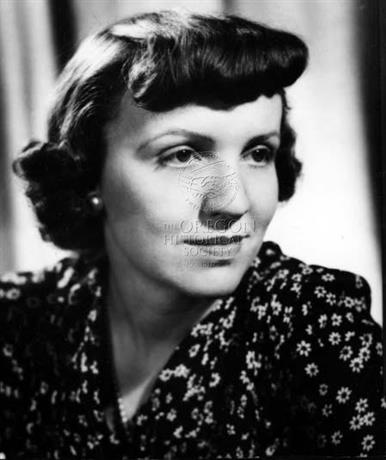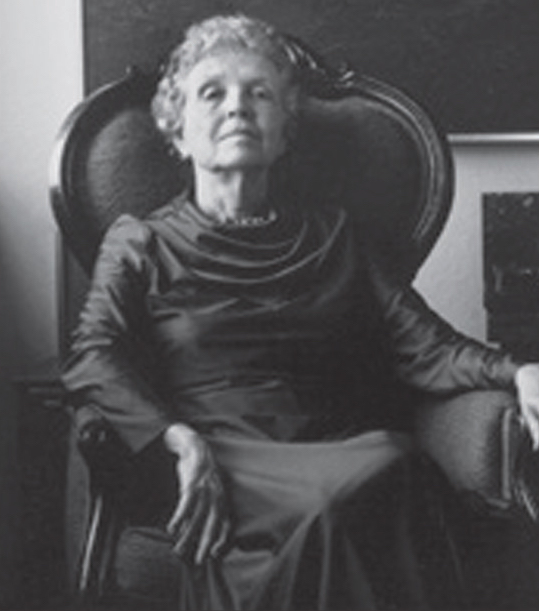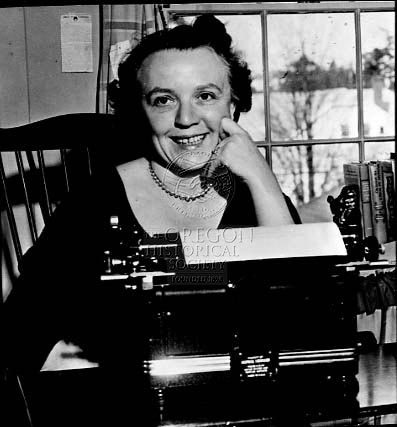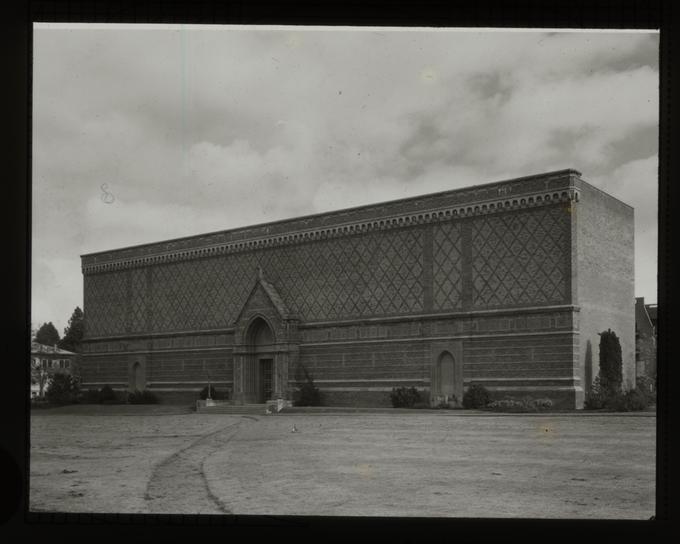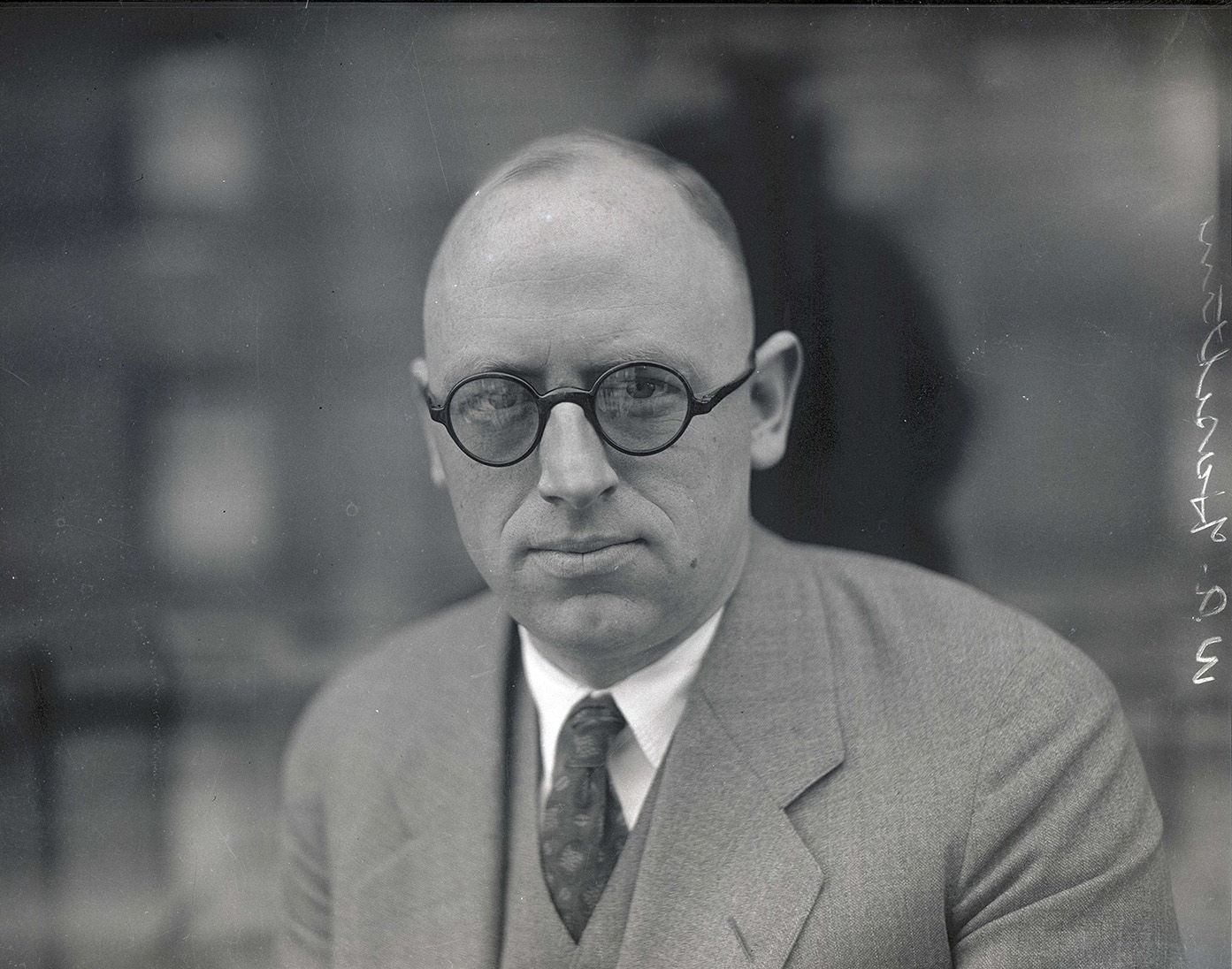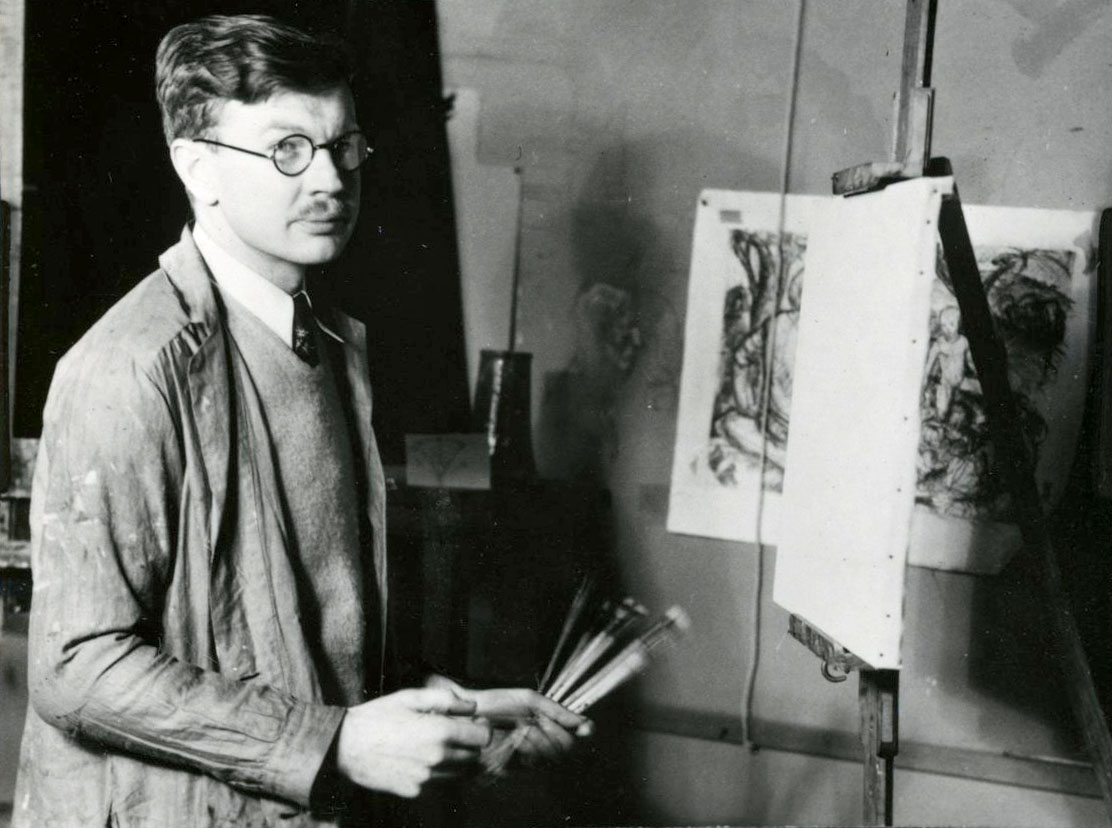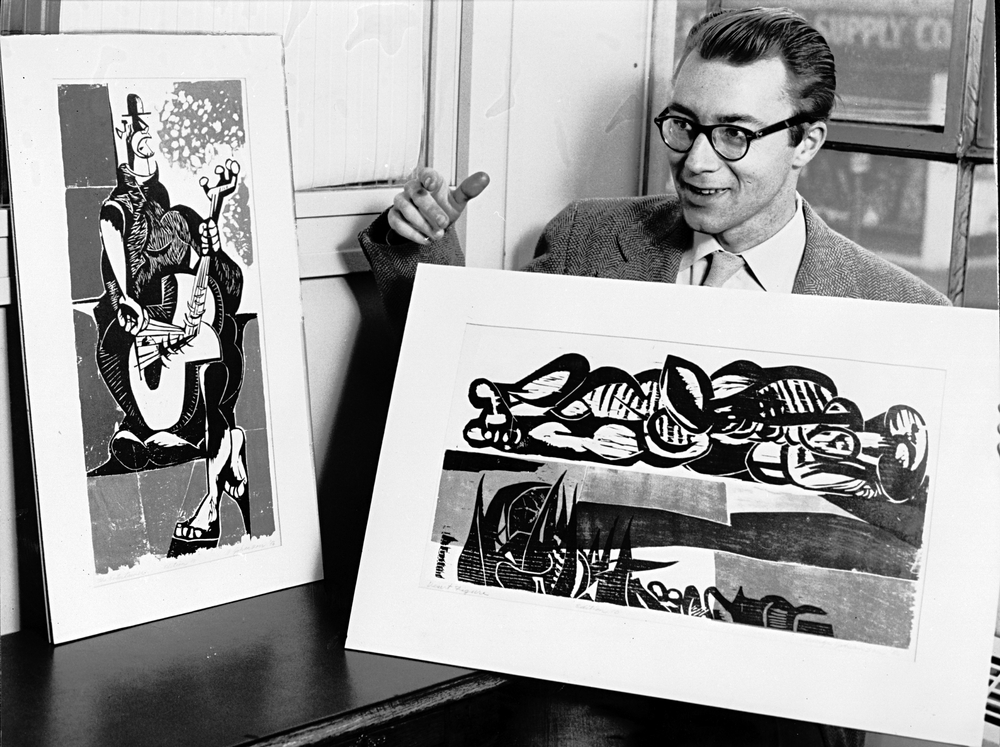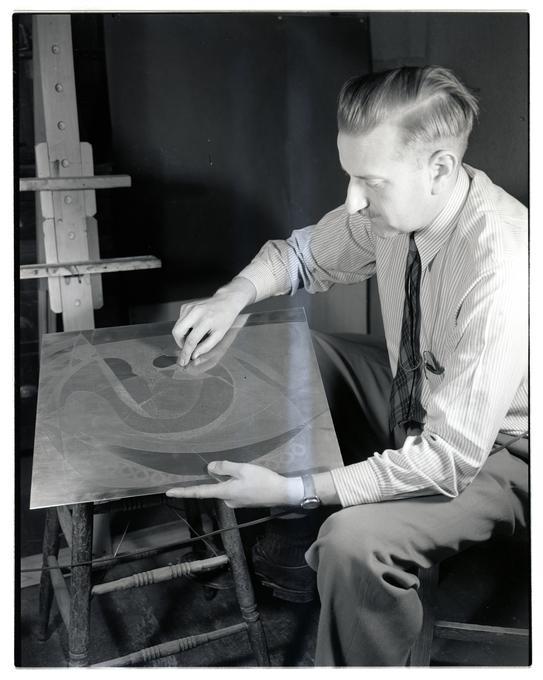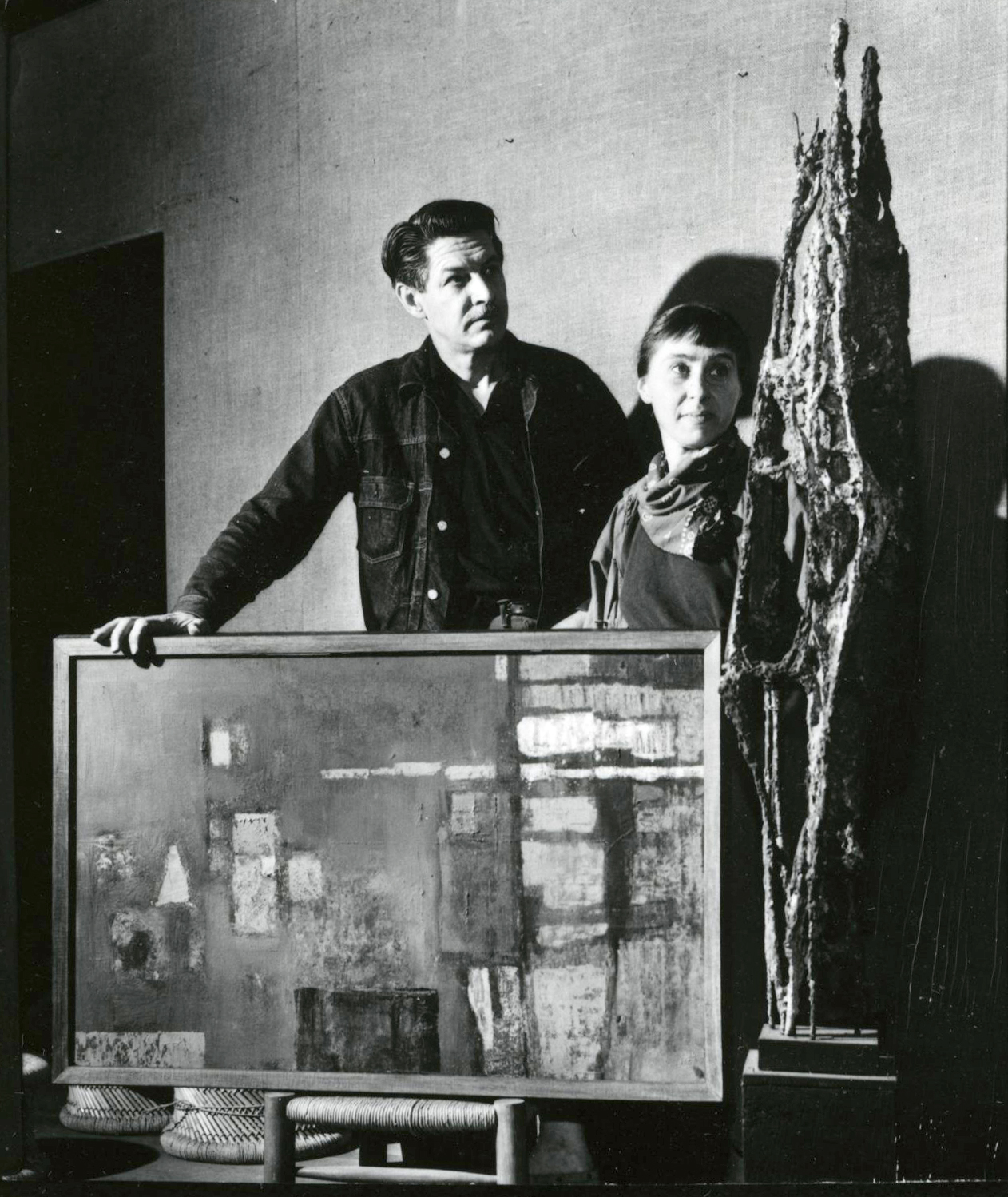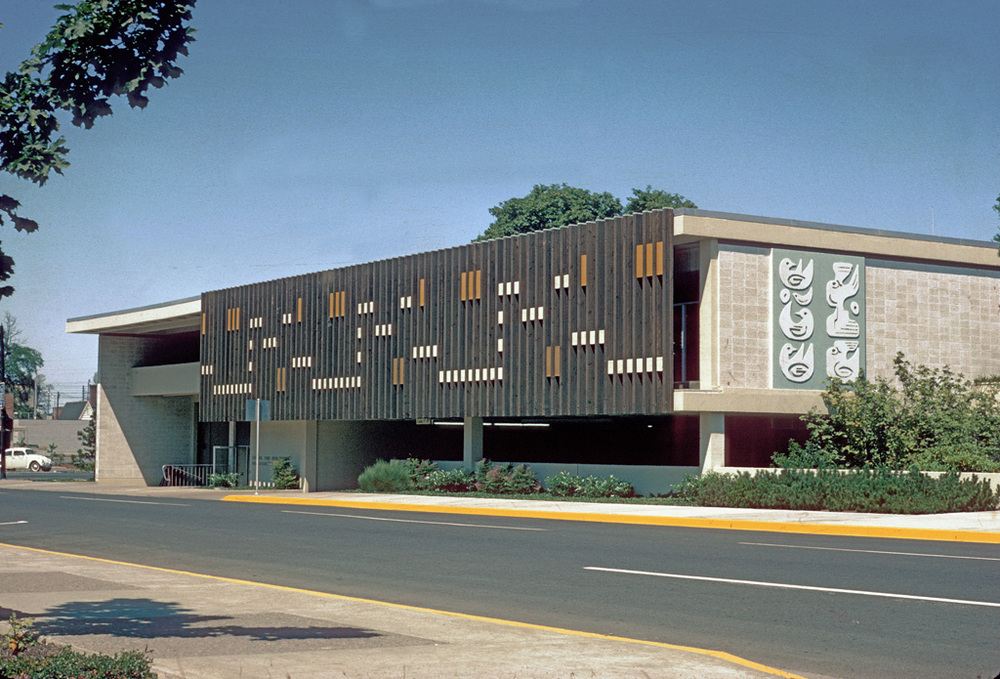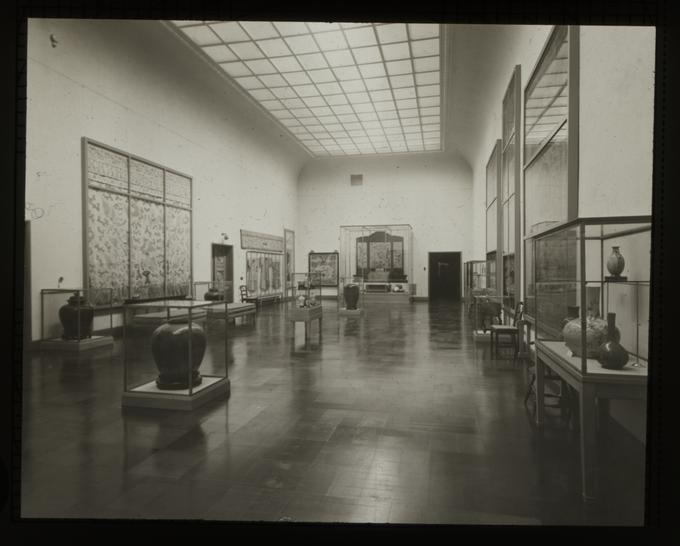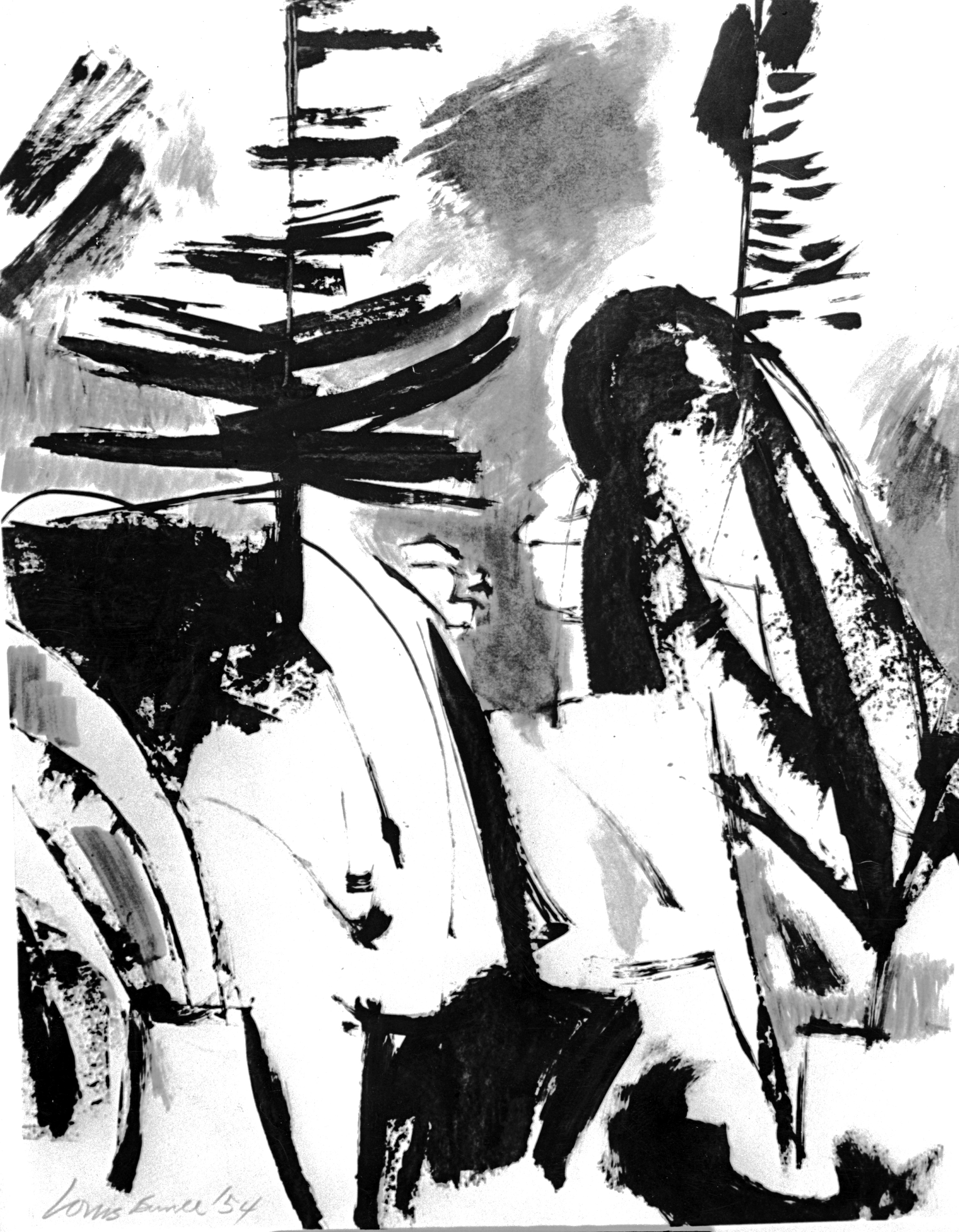Writer, collector, and arts advocate Virginia Haseltine was a major figure in shaping the collecting interests of the University of Oregon Museum of Art (now the Jordan Schnitzer Museum of Art) and promoting the work of Pacific Northwest artists during the twentieth century. In 1975, on the occasion of a major exhibition of Haseltine’s collection, Museum Director Richard C. Paulin described her as “a dedicated patroness and purposeful supporter of artists and craftspeople throughout the Northwest.”
Virginia Marquette was born in Louisville, Kentucky, on June 26, 1906, and attended Indiana University in Bloomington. She began her career as a journalist at the Louisville Courier-Journal. After the death in 1935 of her husband, George F. Shirley Sr., she moved from Seattle, where the family was living, to Portland with her young son in 1941 to join the staff of the Oregon Journal.
During her early years in Oregon, Virginia lived in a neighborhood known as The Artist’s Colony in Portland’s southwest hills. There, with exposure to her neighbors' talents and art-making activities, she developed an interest in contemporary art. One influential resident was Louise Aaron, who covered the arts for the Oregon Journal and helped Marquette develop her own critical eye. Unable to afford paintings by major Pacific Northwest artists, she purchased the work of lesser-known artists who lived in the neighborhood.
During the 1940s, she was a correspondent for the Christian Science Monitor and Mademoiselle under the name Virginia Shirley. She was the first woman to hold the position of executive secretary for the City Club of Portland and served as campaign chair for the Portland League of Women Voters.
In 1946, she married William Ambrose Haseltine (1897–1976), who was president of the J. E. Haseltine Hardware Company and chair of the Portland School Board. He was a major donor to the University of Oregon athletics program, and he and Virginia frequently visited the campus in Eugene. During her visits, she became interested in the Asian art collection at the University of Oregon Museum of Art (UOMA).
As her artistic connections and the family’s financial resources grew, Virginia Haseltine’s personal art collection increased as well. She saw an affinity between the art of China, Korea, and Japan and that of the Pacific Northwest, and she spearheaded efforts to expand the UOMA’s collection to include contemporary regional art. The museum exhibited over a hundred works from her collection in Pacific Northwest Art: The Haseltine Collection in 1963. Among the sixty-one regional artists included in the exhibit were Louis Bunce, Betty Feves, Gordon Gilkey, Morris Graves, George Johanson, LaVerne Krause, David McCosh, Carl Morris, Hilda Morris, Amanda Snyder, Mark Tobey, and Jan Zach. To Haseltine, artists were vital to the health of a community and to a productive and meaningful society.
In 1966, Governor Mark O. Hatfield created the Governor's Planning Council on the Arts and Humanities, which evolved into the Oregon Arts Commission. Haseltine was an original council member and helped prepare for opportunities under the newly launched National Endowment for the Arts and National Endowment for the Humanities. By this time, she had established a friendly correspondence with Morris Graves, and she urged UOMA Director Wallace Baldinger, University of Oregon President Arthur Flemming, and others to support a vision for the museum that prioritized the acquisition of works by Graves. The Graves-at-Oregon Project resulted in the acquisition of over five hundred drawings and paintings in 1968, and the museum now holds the largest public collection of works on paper by Graves.
Throughout the 1970s and 1980s, Haseltine continued to make major gifts of contemporary art to UOMA. She also assisted in a reciprocal exhibition program called Statewide Services, which facilitated loans between visual arts institutions in the Pacific Northwest. She established an endowment in the 1960s that provided support for additional acquisitions at UOMA (now renamed the Jordan Schnitzer Museum of Art). In recognition of her advocacy, Haseltine was honored with the first Pioneer Award from the University of Oregon in 1979 and a Governor's Arts Award in 1985.
In 1987, Haseltine helped restage the play The London Hussey, which she had written and produced in 1953 about feminist writer Mary Wollstonecraft. The proceeds raised funds for the Storefront Theatre, as well as the Portland Civic Theatre, which produced the original performance decades earlier.
Virginia Haseltine died in Portland in 1991. Her portrait, painted by Henk Pander in 1983, hangs in the Jordan Schnitzer Museum of Art.
-
![]()
Virginia Shirley (Haseltine), 1943.
Oregon Historical Society Research Library, 010808
-
![]()
Virginia Marquette Haseltine, 1979.
Courtesy University of Oregon -
![]()
Virginia Marquette Haseltine, 1953.
Oregon Historical Society Research Library, 011384
-
![]()
Jordan Schnitzer Museum of Art (then the U.O. Museum of Art), Eugene.
Courtesy University of Oregon Libraries
-
![]()
W. A. Haseltine, c.1930s.
Oregon Historical Society Research Library, 371N1079
Related Entries
-
![David McCosh (1903-1981)]()
David McCosh (1903-1981)
David McCosh, an important Oregon painter and influential teacher, was …
-
George Johanson (1928-2022)
George Johanson was a Portland painter and printmaker known for his ima…
-
![Gordon Waverly Gilkey (1912–2000)]()
Gordon Waverly Gilkey (1912–2000)
Gordon Waverly Gilkey was a Monuments, Fine Arts, and Archives officer …
-
![Hilda Morris (1911-1991)]()
Hilda Morris (1911-1991)
Hilda Grossman Deutsch Morris was an influential modernist sculptor ass…
-
![Jan Zach (1914–1986)]()
Jan Zach (1914–1986)
Sculptor Jan Zach, who joined the faculty of the University of Oregon i…
-
![Jordan Schnitzer Museum of Art]()
Jordan Schnitzer Museum of Art
The Jordan Schnitzer Museum of Art (JSMA), situated on the Memorial Qua…
-
![Louis Bunce (1907-1983)]()
Louis Bunce (1907-1983)
Louis Bunce, a major painter and printmaker beginning in the 1930s, is …
Map This on the Oregon History WayFinder
The Oregon History Wayfinder is an interactive map that identifies significant places, people, and events in Oregon history.
Further Reading
A Gift of Love. Eugene: University of Oregon Museum of Art, 1975.
Couch-Goodling, Becky. “A Collection of Dreams: The Legacy of Virginia Haseltine.” Master’s Project. Presented to the Arts and Administration Program, University of Oregon, 2002.
Haseltine, Virginia. “The Oregon Collector at Home.” In Pacific Northwest Art: The Haseltine Collection, by Haseltine, p. 1-29. Eugene, Oregon: University of Oregon Friends of the Museum of Art, 1963.
“Virginia Haseltine, 1966-68.” Collections Archives, Jordan Schnitzer Museum of Art, University of Oregon, Eugene, Ore.



